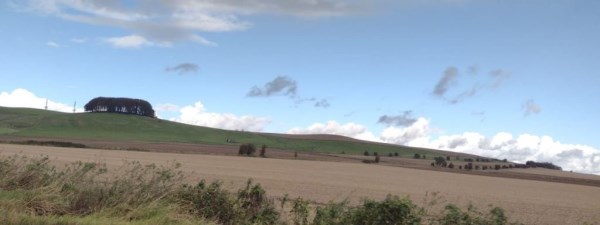News & Projects
April 2025
Remembering the April 1944 tragedy when nearly 1000 US soldiers died whilst training for the D-Day landings, they made the greatest sacrifice for our freedom.
Archaeological Surveys celebrated 20 years of work in geophysics at the beginning of the year.
In March we attended the 2025 Wiltshire Archaeology Conference in Devizes where a number of projects that we had carried out geophysical survey for were presented. Our stand provided information on our recent research at Devizes Wireless Station, just three miles from the conference location, as well as other community and research projects within Wiltshire.
Cheers, Dave Sabin
Banbury Radio Station was constructed in 1921 as the British receiving station for the first link in the Imperial Wireless Chain. The site received signals from a transmitter in Egypt at Abu Zabal, the British transmitter site was located about 17 miles from Banbury at Langley near Leafield, together the stations were known in the 1920s as the 'Oxford Station'. As technology developed and the requirements of the Imperial Wireless Chain changed, Banbury became redundant in the late 1920s and was only in occasional use up until WWII when evacuees from the GPO's Dollis Hill site arrived. Much of the work during WWII was related to the production of crystals for radio equipment. In the post-WWII period the site became known as Banbury Radio Measuring Station and was involved in the organisation and monitoring of the radio spectrum. The site closed in the late 1960s and shortly after was demolished ahead of the construction of housing at the south eastern edge of Banbury.
Archaeological Surveys Director Kerry Donaldson recently presented geophysical results from a survey along a Thames Water pipeline route that revealed a number of new Highworth Circles. Kerry discussed what is known about these unique and enigmatic features and how the new discoveries fit into the wider landscape. David Sabin manned a poster display at the conference which included images and articles on Devizes Wireless Station, Wroughton Wireless Receiving Station and work on the recently scheduled Roman settlement site at Chipping Norton, as well as a number of other large Roman sites around Swindon.
Wroughton Wireless Station was the receiving station for the first transatlantic wireless telephone service which began operation in 1927. The site was located at Rectory Farm which was demolished to make way for the construction of RAF Wroughton. The significant role of the station within the development of wireless communication is generally poorly known although it is briefly mentioned in archives relating to Rugby Radio Station, the transmitter for the telephone service, and images are present in the BT Archive.
In 1923 the Marconi Company were interested in purchasing several thousand acres of land at Avebury for the construction of a wireless station. Concerns were raised regarding the impact on the archaeology of the area and Alexander Keiller famously purchased Windmill Hill to protect it from the construction of masts. The 1920s were are period of rapid technological development in wireless communication and it is unclear what the company intended to build at the site; references to 800 feet high masts may infer a long wave station that was actually constructed by the GPO at Rugby. However, at this time Marconi experimentation with short waves led to the development of the Marconi Beam Wireless system that had many advantages over long waves for long distance communication. Radio press releases at the time may infer that the company intended to construct a number of beam stations at Avebury, and possibly a sister station to Rugby Radio. Although there was opposition to Marconi's intentions at Avebury by the archaeological community, the Wiltshire Archaeological Society did not raise any objections; however, some members felt that the committee had been schmoozed by Marconi and disagreed. The wireless station was never built although this may have been as much to do with politics and technological factors along with the archaeological concerns.
Devizes Wireless Station was a short-lived site but played a remarkable part in wireless development in the early 20th century from just pre-WWI to the late 1920s. Initially the first receiving station constructed by Marconi as part of the Imperial Wireless Chain, then used by the military in WWI for direction finding and intelligence (MI1e) and finally maritime communications in the post-war period with demolition in 1929.




